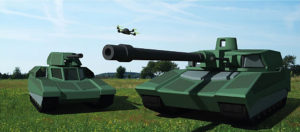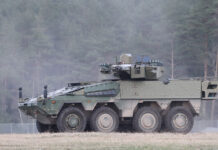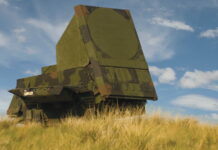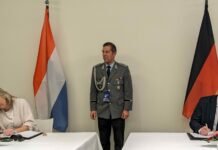With consultation of the Main Ground Combat System (MGCS) project in the German Bundestag studies for the new main combat system can now be commissioned. The German MoD intends to carry out the MGCS as a cooperative project with Germany and France as equal partners, each contributing 50% of the financial requirements and work shares, taking into account the relevant national industry.
For the 18-month System Architecture Definition Study (SADS) Part 1, the financial requirement per nation (maximum limited) is approximately €75 million. The aim is to define, develop and implement a new state-of-the-art main battle tank in order to achieve delivery of the first systems by 2035, when the main battle tank fleets in service (Leopard 2 and Leclerc) will be decommissioned. For the implementation of SADS Part 1, the companies Rheinmetall and Krauss-Maffei Wegmann (KMW) on the German side and Nexter on the French side have agreed to form a working team. This means that a binational contractor structure has been achieved for SADS Part 1.
The MGCS goes well beyond a purely linear continuation of the existing capabilities of the Leopard 2 main battle tank. Germany and France favour a multi-platform concept, for which sophisticated and innovative technologies are required.
The timetable provides for a technology demonstration phase (TDP) until 2024, after harmonization of the multi-platform concepts, to define the system architecture and establish a system management system. Bilateral FT activities serve to prepare necessary future technologies for later integration into the overall system demonstrator and the realization of “technology system demonstrators” (GSDs).
In the period 2024 to 2027, the GSDs will be built in an “overall system demonstrator phase” (GSDP) and the components will be tested for their performance and system compatibility. At the end of this phase, the performance description will serve as a basis for the start of series production. The start of the implementation phase is planned for 2028, probably with the production of verification copies first, which will be tested by the procurement authorities and the troops for compliance with military requirements and suitability for deployment. Following approval, series production will begin. The first production vehicle is scheduled for delivery in 2035. After fielding and training of the crews, operators and tactical leaders, Initial Operating Capability (IOC) is to be achieved in 2040. This would be more than 55 years after the introduction of the Leopard 2 main battle tank and 25 years after delivery of the first Puma infantry fighting vehicle.
Franco-German cooperation is to form the basis for the broadest possible European and NATO cooperation. Germany has taken the lead for the MGCS. However, both nations should benefit equally from the cooperation and receive sufficient intellectual property rights for the intended future use of the results of the work.

The investment in this project will enable the German defence industry to position itself as the world’s leading land system industry in the long term through the development and application of future-oriented land system technologies. The MGCS will maintain and strengthen the national key technology of “protected/armoured vehicles” in line with the German government’s strategy. The MGCS System project has the potential to become the largest European land-based armaments project for the development of a European land combat system in the medium term.
In further implementation agreements, the scope, content and contractual implementation of the services for the launch of joint research and technology (R&T) activities in the fourth quarter of 2020 still have to be agreed with France.
According to the German FMoD, the associated financial requirements from 2020 to 2022 will probably amount to approximately €50 million per nation in a first step (IA2) and a further €124.0 million in a second step (IA3). For purely national R&T activities (for nation-specific shares and support services), the FMoD also calculates a budget requirement of around €56 million for 2020 to 2022.
In order to ensure the delivery of first systems by 2035, the further German funding required for further R&T activities in 2023 to 2027 and the studies with a total system demonstrator (GSDP) are estimated at about €501.5 million.
For 2020 to 2027, on the basis of the above annual figures for the implementation agreements, the total current financial requirement is estimated at €746.5 million.
Together with the share of financing borne by France, the development costs for the MGCS up to the start of implementation (2028) thus amount to €1.5 billion.
Gerhard Heiming












